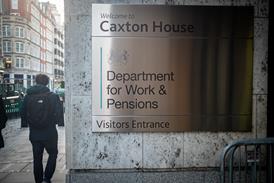Analysis: Whether investing in the UK or overseas, forestry and timberland can be an attractive addition to a pension fund portfolio. So what should trustees be aware of before branching out into this asset class?
UK timber and forestry opportunities may be few and far between, and schemes will often look overseas for exposure to these asset classes. However, growing demand for UK housing has prompted a rise in timber consumption during recent years.
Timberland investments typically involve locking up capital for extended periods of time
Ajeet Manjrekar, P-Solve
A number of local authority pension schemes, including the Suffolk Pension Fund, have exposure to forestry and timberland, either in the UK or abroad.
Some corporate schemes have also put down roots in this sector. The £31bn main section of the RBS Group Pension Fund has a 0.3 per cent allocation to forestry and timber, while the £2.8bn SLC section of the Magnox Electric Group within the Electricity Supply Pension Scheme has a £42m investment in a unitised forestry fund, comprising woodlands located in northern England and Scotland.
But forestry is not necessarily limited to the larger schemes. The £91.8m Plymouth and South West Co-operative Society Employees’ Superannuation Fund, for example, has a 1.8 per cent exposure to this asset class.
Diversification questions to be asked
Edward Daniels, director at FIM Services, provider of sustainable forestry and renewable energy investments, noted: “Forestry is considered a good investment for investment institutions… as it provides excellent portfolio diversification.”
However, Ajeet Manjrekar, co-head of P-Solve, said: “With limited global supply, building a well-diversified portfolio across the major timber geographies at an attractive yield is challenging today.”
He said that, in addition, “this requires a manager of significant scale, and in practice there are relatively few providers who can do this effectively”.
Increasing interest in UK market
But Daniels has seen “more and more interest in the UK forestry market from institutional investors, as they see the risk-reward ratio… as being significantly better than other mainstream asset classes”.
He highlighted the fact that UK forestry returns are not correlated to other asset classes, and are positively correlated to inflation, therefore protecting real returns.
According to FIM, an increase in housing starts, which refers to the number of new residential construction projects that have begun during any particular month, has resulted in the continued rise in timber consumption in the UK.
Source: Structural Timber Association (annual survey of UK structural timber markets 2015)
Nevertheless, Daniels admits that “one of the constraints that have prevented more institutions in investing in UK forestry is the size of the market, which is circa £150m per annum”.
He said: “It is rare to see a large portfolio of forestry properties come to the market,” and the alternative is to invest in the overseas forestry market, “which carries exchange rate risk”.
Do your due diligence
Simon Cohen, chief investment officer at professional trustee company Dalriada Trustees, said: “Liquidity is one of the issues” trustees should explore prior to investing in asset classes such as forestry.
He also reminded trustees to make sure they do all their due diligence before committing to a timber or forestry fund.
Cohen said smaller-budget schemes may “not want to have too much exposure to this particular asset class… given that it’s not easily accessible”.
Olivier Lebleu is head of international distribution at OM Asset Management, which owns Campbell Global, a firm that acquires and manages timberland for investors. Lebleu said the main things drawing pension schemes to timber “are the consistency of the income distribution” and “the diversification that the returns bring to the overall portfolio”.
Combined Nuclear seeks inflation linkage with ground rents
The Combined Nuclear Pension Plan has added a commercial ground rents fund to its portfolio as part of its interest in assets with long-term inflation-linked cash flows.
“As trees grow, they only become more valuable,” said Lebleu. If there is a housing recession, for example, and “you don’t need to sell as many logs as you did before… as long as you haven’t borrowed against your property and you have no debt to service, you could just let the trees grow,” said Lebleu.
“Over time, as they get more valuable and the market recovers, you’ll effectively have a more valuable asset to sell into a better market. That characteristic of being able to let the asset grow… means that there’s very little volatility”, he said.
Manjrekar agreed timberland can be attractive but cautioned: “Timberland investments are conceptually attractive for institutional investors. However, they typically involve locking up capital for extended periods of time."














